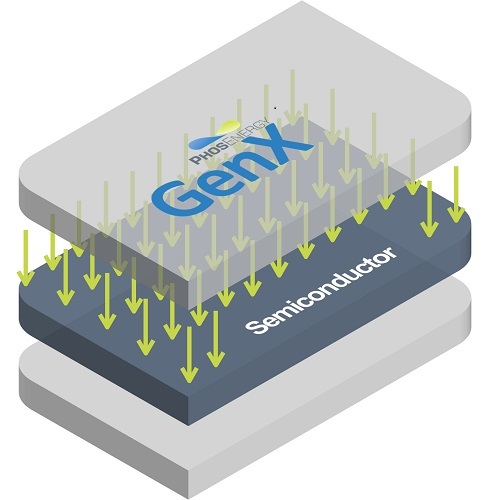29 March 2022
 UniSA materials scientists Professor Drew Evans and Dr Roya Rudd will play a key role in an ambitious national project to build remote power generation units for use in space and at isolated defence sites.
UniSA materials scientists Professor Drew Evans and Dr Roya Rudd will play a key role in an ambitious national project to build remote power generation units for use in space and at isolated defence sites.
The Future Industries Institute (FII) scientists are part of a $6 million research/industry partnership announced last week, led by energy technology company PhosEnergy to revolutionise two of the most power-hungry sectors.
The project will involve UniSA collaborating with PhosEnergy, manufacturers Duromer Products, electronic warfare company DEWC Systems, and researchers from the University of Adelaide and University of Western Australia over the next three years.
Hundreds of prototype units that can provide power for decades without any human intervention, maintenance or continuous fuel source will be built, leveraging UniSA’s materials engineering expertise and the radiation and thermal management expertise from its partner universities.
UniSA project lead Professor Evans and his colleague Dr Rudd are developing β-Voltaic devices, called GenX, in collaboration with PhosEnergy, converting energy from beta radiation emissions into power without the need for an external fuel supply. This builds on the work delivered through an initial project supported through the Australian Government's Innovations Connections Program.
PhosEnergy has secured a $2.4 million Federal Government grant to build the prototypes, designed to meet the rapidly growing power demands of the space and defence industries. These markets – already estimated to be worth several billion dollars a year – are forecast to grow exponentially.

The GenX energy units combine metals, semiconductors and beta-radiation to produce constant DC power over very long periods.
PhosEnergy Managing Director and UniSA Adjunct Industry Professor Bryn Jones says the burgeoning space industry and increasingly sophisticated remote defence sites were creating enormous demand for long-life, fuel-free power sources.
“The market for power generation in space is already estimated to be worth $2.8 billion annually and is forecast to continue double-digit growth for the foreseeable future on the back of commercial and government space programs that are focused on extended missions, lunar occupation and resource recovery,” Mr Jones says.
“Demand from the defence industry is also soaring as more power-hungry technology is installed in remote locations. Secured integrated communications and sensor developments are driving the requirements for a portable and autonomous long-term power source.”
Professor Drew Evans says the project is the next step in UniSA’s ongoing strategic partnership with PhosEnergy, formed in 2019.
The research/industry collaboration is making progress with the development of a thermovoltaic device that converts infrared energy from waste heat sources into electricity - a project announced earlier this year.
“The GenX project is yet another example of how UniSA partners with industry to underpin its commercial success with high-quality research,” Prof Evans says.
Media contact: Candy Gibson mobile: 0434 605 142 email: candy.gibson@unisa.edu.au



